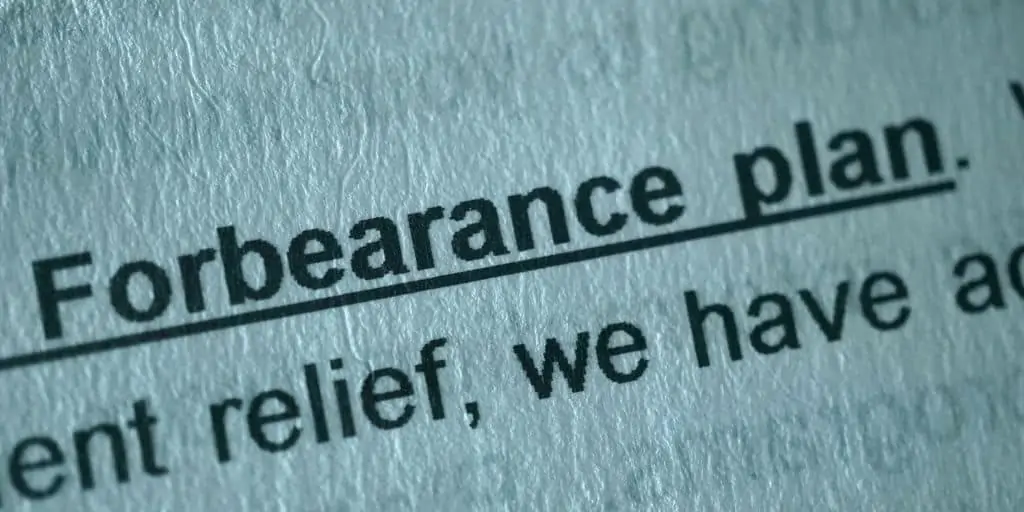What Is a Distressed Mortgage?
Shortcuts: Distressed Mortgage
- A mortgage becomes distressed after multiple missed payments, putting both the loan and property at risk.
- Lenders may offer modifications, forbearance, or refinancing to prevent foreclosure.
- Pre-foreclosure properties often sell below market value due to the distressed status.
- Short sales and loan modifications require lender approval and specific qualifications.
- Investors target distressed mortgages for potential profit through rehabilitation or resale.
Understanding Distressed Mortgages
A distressed mortgage happens when homeowners fall behind on their mortgage payments. It often starts small—maybe they miss one payment due to a temporary money problem. But if they can’t catch up and keep missing payments, things get serious fast.
After 30 days of missing a payment, the bank marks the loan as late. If payments are still missing after 90 to 120 days (3 to 4 months), the bank usually starts the foreclosure process. This means the homeowner could lose their house unless they work out a plan with their lender.
Note that some states follow either a judicial or a non-judicial foreclosure process. Consult our complete list of the judicial and non-judicial foreclosure states in the U.S.
Distressed Mortgages vs. Distressed Properties
Distressed mortgages and distressed properties are closely related but not exactly the same.
- A distressed mortgage refers to a loan that is in danger of default or is already in default. It occurs when a borrower is unable to make full repayments on time due to financial difficulties.
- A distressed property is real estate in poor physical or financial condition. It’s often the result of the owner’s inability to afford repairs, upkeep, property taxes, or mortgage payments.
Their relationship is often a negative feedback loop, often resulting in financial loss. For example, a distressed mortgage can lead to a distressed property when a borrower can’t make mortgage payments. The property may then fall into disrepair due to a lack of funds for maintenance.
On the other hand, distressed properties can also result in a distressed mortgage. If a property’s value declines significantly due to poor condition or market factors, the mortgage may become “underwater,” potentially leading to default.
Signs of a Distressed Mortgage
Mortgages don’t usually go bad overnight. Here are the warning signs that a homeowner is in trouble:
- Missing three or more monthly payments in a row
- Making several late payments over six months
- Using credit cards to pay the mortgage
- Falling behind on property taxes or insurance
- Owing more on the house than it’s worth
- Getting default notices from the bank
- Receiving warnings about unpaid utilities
- Getting citations from the city for property issues
- Important repairs being ignored due to lack of funds
- Basic utilities like water or electricity are at risk of being shut off
- House needing obvious repairs that aren’t getting fixed
- Applying for forbearance or loan modification
Usually, you’ll see several of these signs together. The earlier you spot them, the better chance you have of fixing the situation before it becomes a crisis.
Finding and Investing in Distressed Mortgages
When people stop paying their mortgages, banks often prefer selling these loans (called notes) at a discount rather than going through foreclosure.
As an investor, you can buy these notes for less than what the borrower owes. For example, a $200,000 mortgage might sell for $120,000 if the borrower has stopped paying.
There are several ways to find these notes:
- Banks and credit unions selling pools of notes
- Note brokers who specialize in distressed mortgages
- Online marketplaces for mortgage notes
- Loan servicing companies
- Private individuals holding these notes
Our interview with Rob Hytha explains the strategies for investing in distressed mortgage notes in greater detail and scope than this article allows.
How to Make Money with Notes
There are three main ways to make money with distressed mortgage notes:
- Work with the homeowner
- Take ownership via foreclosure
- Resell the note
The most common and often most profitable approach is the first, where the goal is to keep the homeowner in the home. In return, you can offer better terms (since you bought the loan at a discount), like lowering monthly payments, reducing the principal, or giving them more time to pay. This is a win-win situation—the owner keeps their home with better terms while you earn steady payments on your investment.
If working with the homeowner doesn’t pan out, you can go through foreclosure to take ownership of the property. This takes longer and costs more, but might make sense in strong housing markets or when the property is worth significantly more than you paid for the note.
The third option is fixing problems with the note and selling it to another investor. Maybe you get the borrower back on track with payments or clear up missing paperwork. Other investors will pay more for a note that’s performing well.
Important Things to Consider When Investing in Distressed Mortgage Notes
Remember: Note investing needs more expertise than regular real estate investing. With that said, here are a few tips to get you started:
- Do your homework. Start by reviewing the note’s payment history, since it tells you whether the borrower is facing a short-term problem or a serious crisis. Then dig into the loan documents to understand your rights and responsibilities as the new lender.
- Don’t skip the title search. Other claims on the property, like tax liens or second mortgages, could wipe out your investment. Finally, know what the house is worth and what shape it’s in, as this can be your “backup plan” if things go awry.
- Start with “slightly distressed” notes. When you’re in the buying phase, start with one or two notes that are still getting some payments, even if they’re late. These notes give you a chance to learn the process without taking on too much risk.
- Find a mentor. Consider working with experienced note investors on your first few deals to learn the ropes and avoid costly mistakes.
What a Homeowner Can Do for Distressed Mortgages
On the other hand, if you’re a homeowner falling behind on mortgage payments, you have several options to avoid foreclosure. Let’s look at what you can do:
Loan Modification
You can ask your bank to modify your loan to make payments more affordable. This practice, called “loan modification,” might extend how long you have to pay, lower your interest rate, or change your payment schedule. Banks often agree to this if you can prove you’ll be able to make the new payments.
Forbearance
If you’re dealing with a temporary money problem (like medical bills or job loss), you can ask for forbearance. This means your bank lets you pause payments or pay less for a while.
Remember: You’ll still need to pay this money back later, either all at once or through a payment plan. Forbearance is, at best, a temporary solution.
Refinancing
You might be able to refinance, which replaces your current mortgage with a new one that has better terms. This gets harder if you’ve missed payments because your credit score drops. However, some government programs help people refinance even with payment troubles.
Short Sale and Deed-in-Lieu
Short sales and deed-in-lieu arrangements provide alternatives to foreclosure.
In a short sale, the lender agrees to accept less than the full loan balance from the property’s sale. In other words, you’re going to sell your house for less than the loan balance. However, this requires extensive documentation of financial hardship and lender approval.
On the other hand, a deed-in-lieu means giving your house back to the bank instead of going through foreclosure.
Both options hurt your credit less than a foreclosure and help you move on more quickly.
Frequently Asked Questions: Distressed Mortgages
How long does it take for a mortgage to become distressed?
A mortgage enters distress after missing multiple payments, with serious consequences starting at 90-120 days of delinquency. Most lenders begin considering intervention after three missed payments, though they often start working with borrowers after the first missed payment.
The exact timeline varies by lender and state law. To know when’s the last possible moment to stop a foreclosure, our guide, “When Is It Too Late to Stop a Foreclosure? And How to Do It at the Last Minute” is a comprehensive read.
Can someone buy a house with a previous distressed mortgage?
Yes, but waiting periods apply. Conventional loans require seven years (three with extenuating circumstances) after foreclosure and two years after a short sale.
Meanwhile, FHA loans need three years post-foreclosure and one year after a short sale. Borrowers who can document extenuating circumstances might qualify for shorter waiting periods.
What impact does a distressed mortgage have on credit scores?
A distressed mortgage can reduce credit scores by 100-150 points or more. Late payments remain on credit reports for seven years, while foreclosures and short sales stay for seven years from the date of the first missed payment that led to the default. Recovery time varies based on other credit factors and actions taken to rebuild credit.
References
- Equifax, “When Does a Late Credit Card Payment Show Up on Credit Reports?” https://www.equifax.com/personal/education/credit-cards/articles/-/learn/when-late-credit-card-payments-post/
- SmartAsset, “Can You Pay a Mortgage With a Credit Card?” https://smartasset.com/mortgage/can-you-pay-a-mortgage-with-a-credit-card
- NerdWallet, “What You Should Know About Mortgage Forbearance.” https://www.nerdwallet.com/article/mortgages/mortgage-forbearance
- Urban Institute, “Selling distressed loans to investors significantly cuts foreclosure rates.” https://www.urban.org/urban-wire/selling-distressed-loans-investors-significantly-cuts-foreclosure-rates
- Labrador Lending, “Where To Find Mortgage Notes.” https://labradorlending.com/blog/where-to-find-mortgage-notes/
- Bankrate, “Mortgage loan modification: What it is and how to get one.” https://www.bankrate.com/mortgages/loan-modification-strategy/
- UpSolve, “How To Write a Hardship Letter for a Short Sale.” https://upsolve.org/learn/hardship-letter-short-sale/
- LendingTree, “How to Get a Mortgage After Foreclosure.” https://www.lendingtree.com/home/mortgage/how-to-get-a-mortgage-after-a-foreclosure/
- Anytime Estimate, “FHA Loan Foreclosure Waiting Period.” https://anytimeestimate.com/fha-loans/fha-foreclosure-waiting-period/
- My AZ Lawyers, “The Credit Effects of Foreclosures and Short Sales.” https://myazlawyers.com/the-credit-effects-of-foreclosures-and-short-sales/









